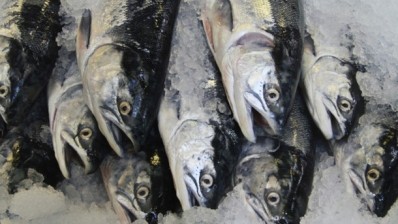Hydrocolloid use could create new fish products: Study
A new review, published in Food Hydrocolloids, reports that the use of hydrocolloid dispersions of carbohydrates and proteins from other food sources could help develop novel fish products, including healthier low-salt products.
“The increasing demand for fish and fish products by consumers is affecting the fishery resources worldwide, drastically reducing the stocks of many fish species such as flounder, cod, hake, and other fishes,” said the researchers, led by Manuel Vázquez from the Department of Analytical Chemistry, at the University of Santiago de Compostela, Spain.
“At the same time, there are several underutilised fish species. In addition, some filleting by-products could be transformed into high-value products through restructuring technology
“These products can include the new low-salt requirements for healthy food,” they added.
Fish processing
“Surimi technology offers a great opportunity to transform different fish species into high commercial value products … However, surimi technology has several negative environmental impacts, which are necessary to minimise,” said the reseachers.
“One such impact is the over-exploitation of white fish stocks, which has compromised the supply of these species. Strategies for using alternative species and fisheries by-catch, together with the maximum utilisation of fish, are being proposed,” they added.
The new review presents an overview of the technologies used to obtain such products, including “the applications of hydrocolloids in fish products, and the implications of the increasing demand for healthy, low-salt fish products.”
Review details
Vázquez and his colleagues explained that the restructuring process offers to fish processors the opportunity to create new products which could take advantage of both low-value fish species and remains from filleting and other processing operations.
They added that a growing concern over the elevated consumption of sodium from processed products “opens an opportunity for the food industry to offer low-salt products.”
However, they noted that adding salt is necessary for obtaining restructured and surimi fish products with the appropriate mechanical and functional properties, as it helps the fish proteins to bind together and form a gel.
Such fish products can, however, be improved or modified by using hydrocolloids such as starch, carrageenan, konjac glucomannan whey protein concentrate , egg white and other soluble proteins as additives, they said.
They explained that hydrocolloids could replace much of the salt needed during the reforming process, as they also work to improve the structure of the gel – thus allowing for lower sodium fish products.
Vázquez and his colleagues also said that boosting the texture and gel strength with hydrocolloids, “allows for the commercialisation of some low-value fish species with higher profits: non-commercial fish species, smaller fishes than commercial size (such as caught as shrimp by-catch), and trimmings from filleting of commercial fish species.”
Source: Food Hydrocolloids
Published online ahead of print, doi: 10.1016/j.foodhyd.2011.05.009
“Food hydrocolloids as additives to improve the mechanical and functional properties of fish products: A review”
Authors: J.A. Ramírez, R.M. Uresti, G. Velazquez, M. Vázquez











